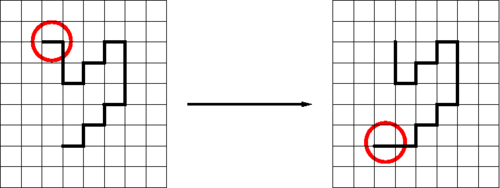Monte Carlo reptation moves
Reptation moves are also known as the "slithering snake" model [1]. It is particularly useful in lattice simulations of long chain molecules such as polymers. One randomly chooses one of the two ends to become the head of the snake. One then removes a piece of its tail, and after another random selection between freely available sites, one tacks on a new section to become the new head of the snake. For example:
If the position of the head is already occupied, the move is rejected. And, in order to avoid any bias, the head now becomes the tail in the next trial move.
